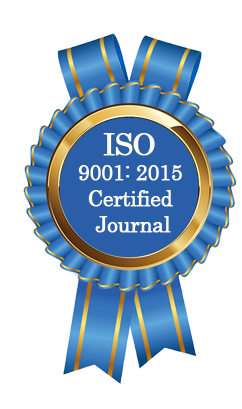| All | Since 2020 | |
| Citation | 105 | 60 |
| h-index | 4 | 4 |
| i10-index | 3 | 2 |
WJAHR Citation 
Login
News & Updation
Best Article Awards
World Journal of Advance Healthcare Research (WJAHR) is giving Best Article Award in every Issue for Best Article and Issue Certificate of Appreciation to the Authors to promote research activity of scholar.
Best Article of current issue
Download Article : Click here
Indexing
Abstract
ONYCHOPHAGIA ASSOCIATE WITH BACTERIA INFECTION AMONG SCHOOL CHILDREN AND TEENAGERS IN NNEWI METROPOLIES
Chioma Maureen Obi*, Chioma Chimeluogo Ezenwa, Ifeanyi Onyema Oshim, Chukwudi A. Ofordile
ABSTRACT
Backgroud: Microbial infection associated with chronic nail biting behavior affecting great percent of teenagers in general population. This habit can result in autoinoculation of pathogens and transmission of infection between body parts. Objective: The purpose of the study was to determine the oral carriage of Enterobacteriaceae among school children and young adults with chronic nail biting habit in Nnewi, Anambra state. Methodology: The study was a comparative cross-sectional microbiological study, conducted on the saliva samples of 70 chronic nail biting subjects and 30 subjects without chronic nail-biting habit with age ranging from 9-25 years. Ethical approval was sought from the ethics committee of Faculty of Health science and Technology, Nnamdi Azikiwe University, Nnewi Campus. The saliva samples were processed in the laboratory according to the standard microbiological methods under very strict complete aseptic conditions. Obtained data was analysed using Pearson Chi-square. Results: Two species of bacteria were recovered in the study, Escherichia coli (56.4%), Klebsiella species (43.6%). The prevalence of Enterobacteriaceae in chronic nail biting subjects were significantly higher than that of non-nail biters. Higher prevalence of Enterobacteriaceae was also seen in males (88.4%) than females (63.0%). Conclusion: The study showed that anxiety, poor hygiene, not having a personal clipper, ignorance of the harmful effects of nail-biting, boredom, bad habit, dirty environment, habitual nail-biting and stress are risk factors that tend to increase the chances of onychophagia.Key words: Klebsiella species, Escherichia coli ,onychophagia.
[Full Text Article] [Download Certificate]
